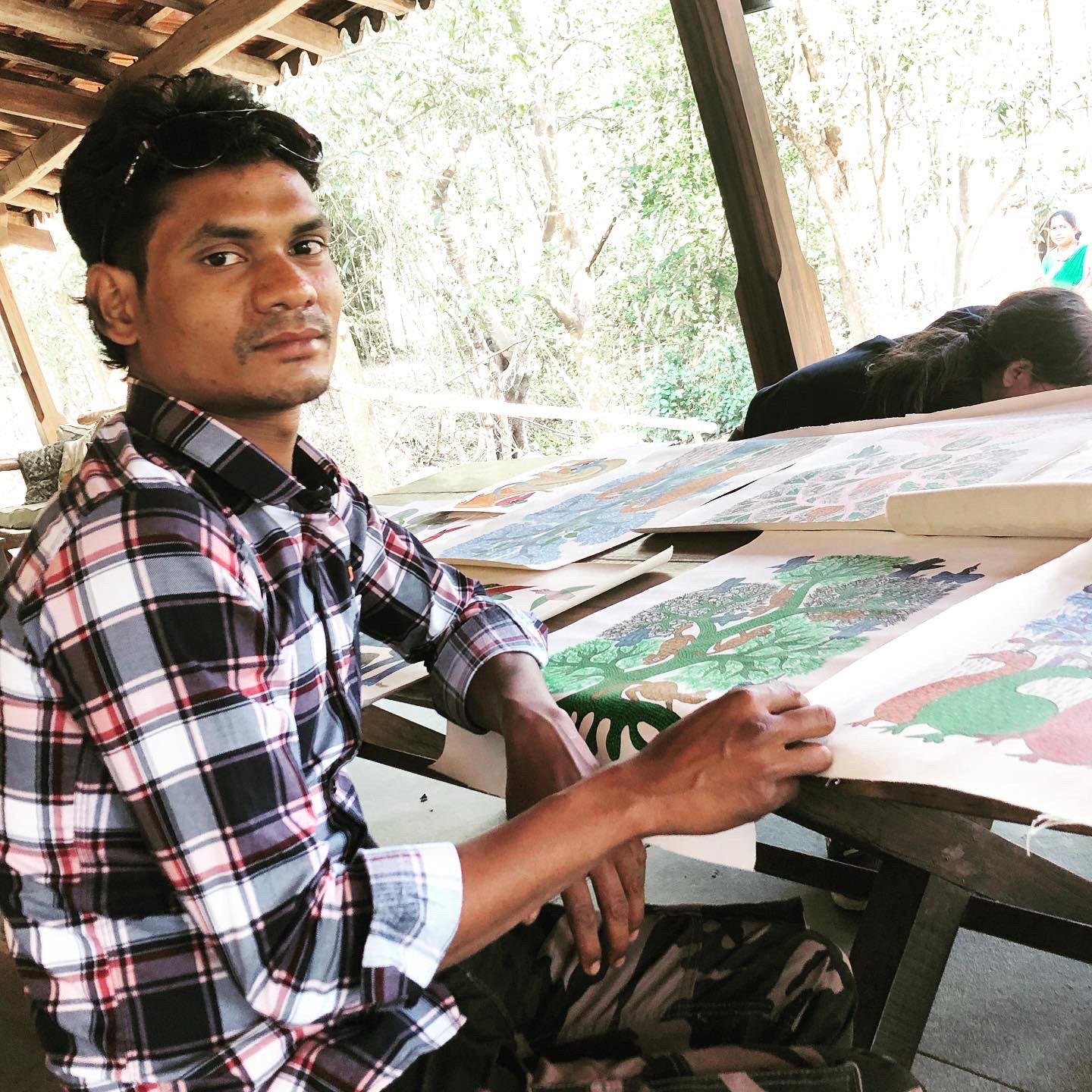The indigenous people of Kanha were originally forest-dwelling tribal communities whose way of life involved a form of shifting cultivation and opportunistic hunting without disrupting the ecosystem. This harmonious integration allowed forests like Kanha to remain rich and intact, while human pressures on our dwindling wild habitats increased. Regulation of India’s Protected Areas since the 1850s, and the creation of Tiger Reserves in the 1970s caused tremendous shifts in the lives of these communities, both geographically - all villages were relocated to the periphery of the reserve, and culturally, as they needed to adopt a form of settled and subsistence farming. The increasing popularity of Kanha as a tourist destination has given rise to new opportunities, especially among the younger generations, and we have a number of activities that will allow you to interact with and support the people of Kanha.
Gond Painting with Nilesh
Nilesh is from a small but growing number of artists within the Gond community, who create imaginative and abstract paintings depicting different elements of wildlife, nature and rural life, embellished with intricate ‘signature’ motifs.
Nilesh is from Patangarh, where ‘Gond Art’ originated, but lives in Kanha through the season, visiting Shergarh regularly to display his latest creations, always a visual feast. You can view Nilesh’s collection or pick up a brush and spend an hour or more painting with him - a most therapeutic activity enjoyed by children and adults alike.
WILDLIFE SOUVENIRS WITH PASHOO PAKSHEE
Pashoo Pakshee is an organisation that works with rural communities to create craft-based livelihoods, which alleviates dependency on forest produce, in turn reducing human-animal conflicts. Their women-led centre in Kanha is a short drive or an ideal cycle ride from Shergarh.
Create your own wildlife souvenir while sitting under a gazebo listening to stories of life around Kanha and sipping blue-pea tea. Browse their shop for other delightful and original souvenirs, and also visit the adjoining Baiga house-museum.
VILLAGE MARKETS
Tribal haats take place every week in large villages, with farmers travelling in from surrounding areas with their produce: mostly vegetables, spices and fish, sometimes cattle and bamboo baskets, as well as traders selling cooking vessels, bangles, clothes and jewellery.
Wandering through these lively markets is an opportunity to see village life characterised. There is nothing touristically contrived about these markets, any item that may catch your eye has present-day relevance in the community. Soak in the atmosphere at a chai stall, buy yourself a snack of raw chickpeas, or perhaps dive in for a cut-throat shave under the shade of a tree!



















